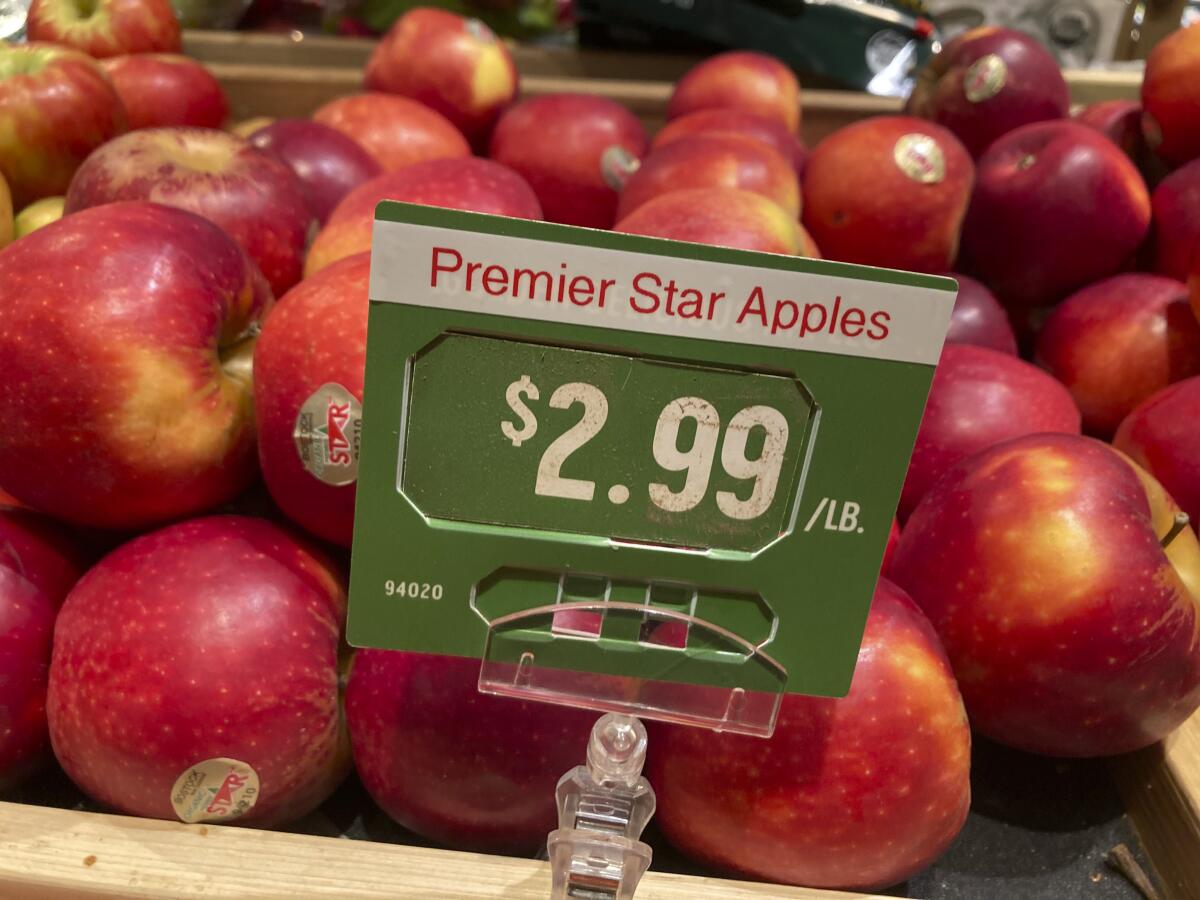U.S. producer price inflation eases to still-high 8.5%

Prices at the wholesale level rose 8.5% in September from a year earlier. That figure represents the third straight decline in the inflation rate, though costs remain at painfully high levels.
Wednesday’s report from the Labor Department also showed that the producer price index — which measures price changes before they reach the consumer — rose 0.4% in September from August, after two months of declines.
The September monthly increase was larger than expected and was pushed higher by a big increase in hotel room costs and higher prices for other services. Food costs also rose in September from August, after a slight drop the previous month. The cost of fresh and dry vegetables soared nearly 16% in September from August.
The larger-than-expected monthly increase in overall wholesale prices suggests inflation pressures are still strong in the U.S. economy, with the Federal Reserve likely to continue its rapid pace of interest rate hikes at its next meeting in November.
Wholesale gas costs fell last month, but probably will reverse in the coming months now that oil prices are rising again in the wake of planned production cuts by many oil exporting nations. Grocery bills are rising at their fastest pace in decades, and prices at the gas pump are rising again, squeezing consumers’ budgets.
Excluding the volatile food and energy categories, core prices rose 0.3% in September from August for the third straight month, and 7.2% compared with a year earlier.
Overall wholesale inflation peaked at 11.7% in March.
Services prices — including healthcare, lodging and shipping — rose 0.4% in September, the most in three months. Fed officials have recently cited rising services prices as a source of concern, because they can take longer to reverse since they mostly reflect the effect of rising wages.
Healthcare costs rose last month, driven higher by a 0.7% increase in nursing home prices.
Stubbornly-high inflation is draining Americans’ bank accounts, frustrating small businesses and raising alarm bells at the Fed. It is also causing political headaches for President Biden and congressional Democrats, most of whom will face voters in mid-term elections in less than a month.
The Fed has boosted its benchmark short-term interest rate by 3 percentage points since March to combat rising prices. It’s the fastest pace of rate hikes since the early 1980s. Higher rates are intended to cool consumer and business borrowing and spending and bring down inflation.
Wednesday’s producer price data captures inflation at an earlier stage of production and can often signal where consumer prices are headed. It also feeds into the Fed’s preferred measure of inflation, which is called the personal consumption expenditures price index.
More to Read
Inside the business of entertainment
The Wide Shot brings you news, analysis and insights on everything from streaming wars to production — and what it all means for the future.
You may occasionally receive promotional content from the Los Angeles Times.









